2015 Lincoln Navigator Review
You have to give Lincoln credit: For all the changes the brand is making, they know when to leave a good thing alone.
FAST FACTS
| Engine: 3.5L EcoBoost V6 makes 380 hp, 460 lb-ft of torque |
| Transmission: Six-speed automatic transmission |
| Price: $62,475 to $78,130 including delivery |
| Fuel economy: 16 MPG city/22 MPG highway/18 MPG combined for the short-wheelbase 4×2 down to 15/19/16 for the extended-length 4×4 |
While the company continues to re-invent itself, experimenting with model names, marketing themes and even its very identity, the Navigator has barreled straight ahead at full speed. It continues the tradition of old-school Lincolns, if in a slightly unconventional form. It is big and plush, unexpectedly quick and admirably quiet. No nerves will be jangled from inside its leather-lined confines.
Which is not to say the 2015 updates are superficial; those things that needed to be changed were updated with a vengeance. We must start with the Nav’s appearance. No one is quite sure what came over Lincoln’s styling department when they penned the previous Navigator; happily, the new one does away with that unfortunate egg-crate grille, replacing it with a pleasant adaptation of Lincoln’s split-wing fascia. Out back, the Navigator sprouts a full-width LED taillight (no worry about confusing the Lincoln with a Dodge, as the execution isn’t anywhere near as graceful). The 2015 Navigator isn’t striking like the Cadillac Escalade or handsome like the Audi Q7, but it’s still more attractive than the old version.
Mix of Old and New Schools
Inside, the dashboard has also had a clean-up and sort-out. The basic symmetric theme remains, with big boxy brows that stir vague recollections of the early 1960s, the high point of Lincoln design. But the 1970s-style instrumentation (those silly square gauges) are gone, replaced by something more contemporary. That’s the good news. The bad news is that the contemporary replacement is the MyLincoln Touch system.
For those who haven’t heard this rant before, MyLincoln Touch instrumentation consists of an analog speedometer flanked by two video screens, each controlled by thumb-buttons on their respective sides of the steering wheel. Why do we loathe it? It took us twelve button-presses to switch from the trip odometer to the suspension mode selection screen, where we could switch between Sport, Normal and Comfort (not worth the effort, as it turns out; more on that later)and six more presses to get back to the trip odo. One really ought to be paying more attention to the road, especially while driving a three-ton SUVand extra-especially when said SUV lacks contemporary safety features like adaptive cruise control or a collision warning system.
Smaller Engine Comes With Big Boost
We did like what we found under the hood because the Navigator ditches its traditional V8 for the twin-turbo 3.5 liter EcoBoost V6. The power figures are remarkable for an engine this size: 380 horsepower and 460 lb-ft of torque when run on 93 octane fuel, a bit lower on regular. Aside from a slight hesitation when moving off from a stop, the engine does a near-perfect imitation of a V8. And if you do a brake stand, it’ll spin the tires on launch. Or so we have been told, because of course we would probably almost never do such an irresponsible thing.
The main reason for the switch from V8 to V6 is, of course, fuel economy. EPA estimates for the 2015 Lincoln Navigator are 16 MPG city/22 MPG highway with rear-wheel-drive and 15/20 for the four-by-four and slightly lower for the long-wheelbase Navigator L. That’s a two MPG improvement across the board compared to the old V8-powered Navigator, pretty significant for a vehicle of this size. We averaged just over 19 MPG in gentle back-country touring.
Soft Leather, Spacious Interior
And we certainly can’t complain about the comfort. Driving a Navigator (or riding in one; the two experiences are rather similar) brings to mind verbs like coddle, cocoon (yes, that can be used as a verb) and isolate. Travel in the Navigator is intended to be effortless, starting with the electric running boards that automatically fold down when you open the door and then go back into hiding once you have embarked. The seats are covered in buttery-soft leather and everything you might need to adjust, save the rear-view mirror, can be moved electrically.
Credit goes to Lincoln for the job they did with the back seats. The second row, which offers a choice of buckets (with or without a center console) or a three-place bench, offers good legroom, although the seats come up a little short on thigh support. Access to the third row could be better, but the low floor provides better comfort in the way-back than most three-row SUVs, even Cadillac’s own king-size Escalade.
The Navigator provides 18.1 cubic feet of cargo space behind the third row (oriented vertically; think groceries rather than suitcases) and 54.4 with the third row folded down (power-operated, of course). If you need three rows and luggage space, you’ll want the long-wheelbase Navigator L, with 42.6 cubes behind the third row and 86.3 behind the second. The L’s 12-inch wheelbase stretch also provides better stability for long trailers, though the extra weight trims towing capacity: Short-wheelbase Navigators tow 9,000 lbs, or 8,600 for the 4×4. The L tows 8,500 lbs in 4×2 form and 8,300 lbs as a 4×4.
Lincoln is touting their adjustable shocks (called Continuously Controlled Damping, or CCD) as if the technology hasn’t been around for over two decades. We found little difference between Comfort, Normal and Sport modes; Sport might pass a few more bumps through to the seats, but for the most part the ride is soft and isolated regardless of which mode is selected.
The steering, too, is light and almost ethereal. But thanks to the independent rear suspension, the Navigator corners with more agility than you’d expect and doesn’t get thrown off course by mid-corner bumps. We thought the ride was a bit smoother and more settled than GM’s live-rear-axle SUVs; GM’s Magnetic Ride Suspension is more technologically advanced than Lincoln’s CCD, but the General’s solid axle loses out to the Nav’s independent rear end. Incidentally, the Navigator’s weight balance is right around 50/50, which is considered ideal for sports cars.
Technically Unsophisticated
The Navigator being Lincoln’s biggest and best vehicle, we were a bit surprised at the lack of advanced active safety technology. The Navigator comes standard with a blind-spot warning system (as if you’d even notice if you merged into a Civic in this behemoth) and forward and reverse parking sensors. Compare that to the goodies you can get on a Cadillac Escalade or a GMC Yukon — adaptive cruise control, collision warning and mitigation, lane-departure warning and a full-color head-up display — and the Nav seems like a Luddite.
The Navigator is offered in two models, Select and Reserve, with base prices ranging from $62,475 (including $995 destination charge) for a short-wheelbase 4×2 Select up to $75,065 for a 4×4 Navigator L Reserve. Options are limited — sunroof, rear-seat navigation and extra-cost wheels and paint colors — so the Nav tops out at just over $78,000.
That makes it a bargain compared to the Cadillac Escalade, which is priced eight to ten grand higher across the board, though the Caddy does offer more advanced safety equipment. One should also consider the GMC Yukon Denali, which lacks the Caddy’s brand cachet but matches it on features. If you’d like to go German, the Mercedes GL matches the Navigator’s size and heft, but you’ll need to open your wallet nice and wide — the price tag for a well-equipped GL can easily top $100,000.
The Verdict
Would we recommend the Navigator? That’s a tough one. Though the smooth, isolated ride isn’t exactly our cup of tea, we admire how well the Navigator does what it doesand we’re pleased to see modern hardware like the independent rear suspension and small twin-turbo engine instead of the low-cost truck parts that typically underpin these big SUVs.
It’s a shame, though, that Lincoln has skimped on high-tech driver aids. We’d happily trade the twin-turbo engine for the Cadillac’s (or, more likely, the GMC’s) pushrod V8 and more advanced safety technology. That said, if you’re a veteran Nav owner — or if you’re just looking for something big, smooth and quiet — you’ll like the Navigator just the way it is, changes and all.
LOVE IT
- Smooth, quiet, cocoon-like ride
- Independent rear makes for competent cornering
- EcoBoost V6 saves gas and produces plenty of power
LEAVE IT
- Light on modern driver aids
- Forgettable styling
- It's still a six-ton behemoth in a $4-per-gallon world
More by Aaron Gold
















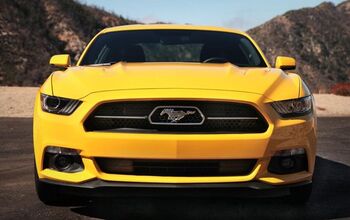


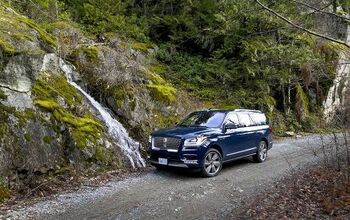
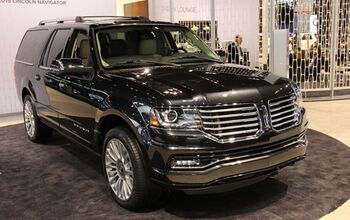


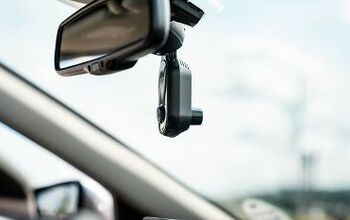




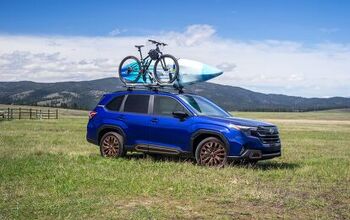

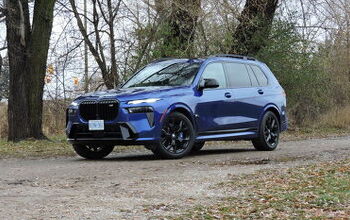
Comments
Join the conversation
Fords Sucks Plain N Simple...if it weren't for the F150 they would be in major trouble...cause Lincoln is Dropping badly! This is just the beginning ..believe me Ford get ur ass in gear before Lincoln goes bankrupt. This SUV is a total waste of money..,.Ill take a R/T 2015 Durango over this outdated price of junk.
That thing is HIDEOUS!